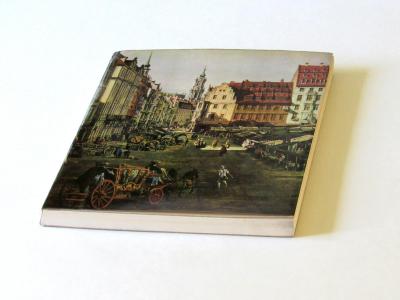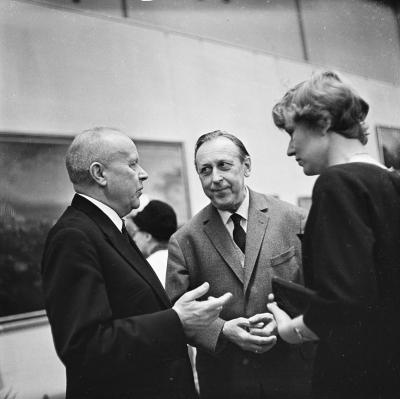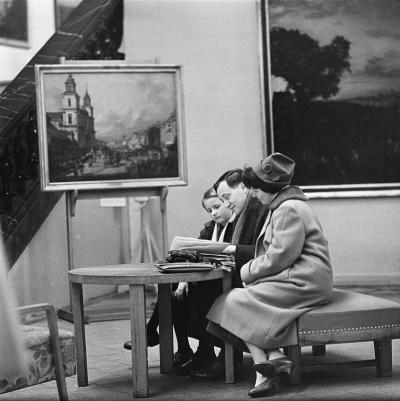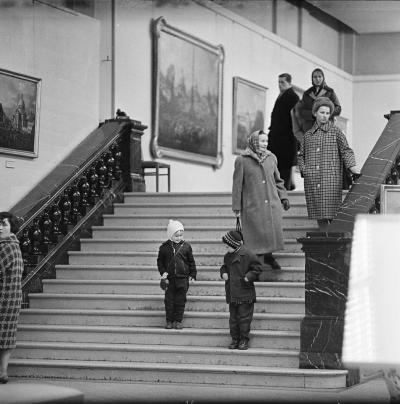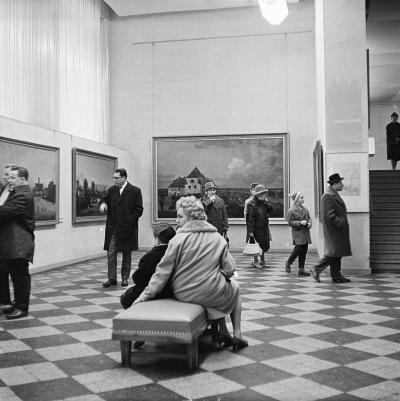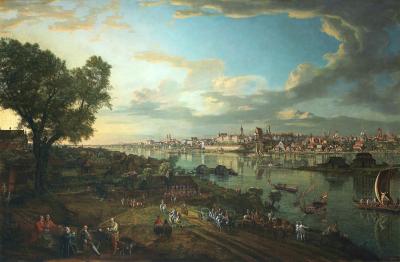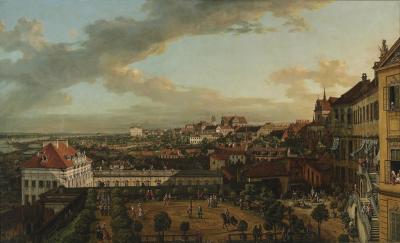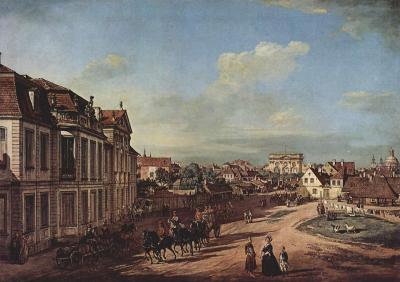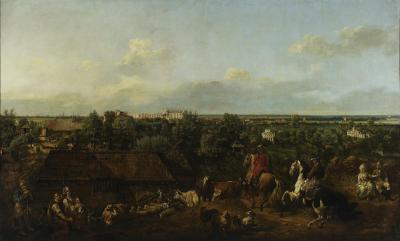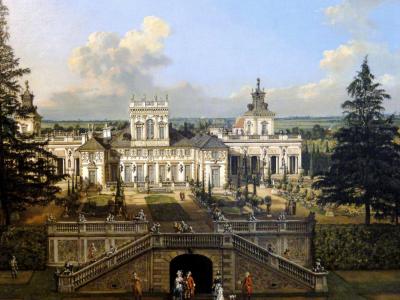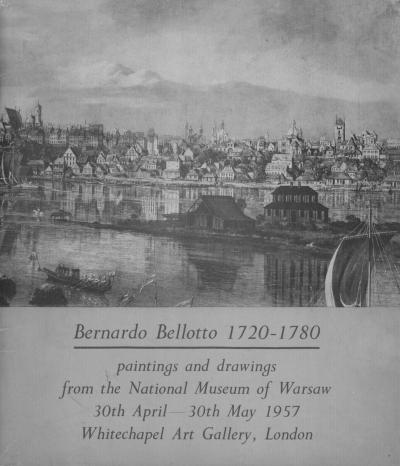The German-Polish Canaletto Exhibition in Dresden, Warsaw and Essen 1963-1966
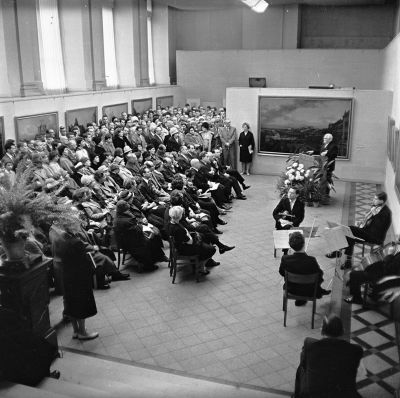
The exhibition was presented in the ground floor of the Albertinum that had served as a gallery since the end of the 19th century. The building was heavily damaged during the Second World War but reopened in 1956 with a huge number of collections including the restored Canaletto paintings from the Soviet Union. Three and a half million people visited the museum until 1963.[5] Thus only the Canaletto stocks from Warsaw and Breslau were really “new” to the people of Dresden. The general director of the Dresden State Art Collections, Max Seydewitz –he was the Minister-President of Saxony from 1947 to 92 – linked the exhibition with the hope of “deepening the friendship between the German and Polish people”, for “friendship between peoples is an important precondition for guaranteeing a permanent peace”. The general director of the National Museum in Warsaw, Stanisław Lorentz, a music specialist and art historian who had been decorated as a former resistance fighter for documenting Polish cultural possessions under the German occupation, desisted from any political appraisal. Instead his contribution to the catalogue noted the “importance of the pictures by Bernardo Bellotto in rebuilding Warsaw“. The rebuilding work was scrupulously orientated on the baroque vedutas of the silhouette of the city and its individual buildings, but not without questioning them critically.
In comparison to the following stops in Vienna and Essen the Dresden exhibition was visited by around 120,000 guests in nine months.[6] During the same period the whole of the State Art Collections counted around 1,900,000 guests.[7] Photographs of the exhibition by the freelance journalists Erich Höhne and Erich Pohl and which were also shown in the daily press,[8] show well-dressed, well educated visitors not only studying the paintings but also deeply engrossed in the catalogue. Daily papers like the Neue Zeit, the Neue Deutschland and the Berliner Zeitung, (which published pictures of Canaletto’s Warsaw view of the “Kraków suburb”), published lengthy reports.[9] On the 12th and 13th May 1964 the State Art Collections in Dresden organised a conference of the participating academics from Poland and Germany. From September to November of that year the exhibition was shown in the National Museum in Warsaw. On this occasion General Director Seydewitz gave a cocktail reception in the Bristol Hotel in Warsaw, that was attended by leading personalities of cultural life in Poland, the German and Italian ambassadors, and Canaletto research workers from the USSR, Italy, the USA, England and West Germany.[10] The exhibition then moved on to Kraków and Vienna, including more loans from the Leningrad Hermitage Museum, the Pushkin Museum in Moscow and the Art History Museum in Vienna.
The exhibition also aroused great interest in West Germany. “The idea came to German capitalists in the communist East“ wrote the magazine “Der Spiegel“ on 2nd May 1966. “After the general manager of the Krupp concern Berthold Beitz saw the pictures of an ancient Italian in the National Museum in Warsaw he also wanted to view them in Germany.”[11] Beitz, who had been an intimate friend of Alfried Krupp von Bohlen und Halbach since 1953, had built up close connections with Poland for many years. As early as February 1958 he travelled to the first business conferences held in Warsaw;[12] and in December 1960 he was invited to a state visit by the Polish Prime Minister Józef Cyrankiewicz. Here, with the unspoken consent of the German chancellor Konrad Adenauer, he negotiated closer economic relationships between West Germany and Poland.[13] He also met up with the Minister for Foregin Trade, Trąmpczyński and the head of the Communist Party, Gomułka. In any case Beitz enjoyed a high reputation in Poland. In September 1939 he was commanded by the head of the German Armed Forces to administrate the oilfields in Galicia. Here, between 1941 and 1944, he and his wife hid Jews and Poles from the Gestapo in the city of Borysłav, amongst others. Cyrankiewicz suggested that the two countries should intensify cultural relationships as a first step towards more general closer relationships, and offered to lend some Egyptian works for an exhibition in the Villa Hügel in Essen in May 1961.[14]
[5] Bernardo Bellotto, Ausstellungskatalog Dresden (1963), p.15.
[6] In Vienna, the exhibition counted 42,000 visitors from April 29 to August 25 1965 (Berliner Zeitung from 08/25/1965), in Essen 51,000 visitors from April 29 to July 31 1966, villahuegel.de.
[7] Neues Deutschland (18/9/1964).
[8] Berliner Zeitung and Neues Deutschland (14/12/1963).
[9] Neue Zeit (12/1/1964); Neues Deutschland (15/1/1964); Berliner Zeitung (22/1/1964).
[10] Neues Deutschland (4/10/1964).
[11] Der Spiegel (1966), no. 19, p. 166.
[12] Der Spiegel (1961), no. 6, p. 16.
[13] Der Spiegel (1961), no. 6, p. 17.
[14] Der Spiegel (1961), no. 6, p. 18; Exhibition „5000 Jahre Ägyptische Kunst“, Villa Hügel, Essen (15/05/1961 – 27/08/1961), villahuegel.de.
